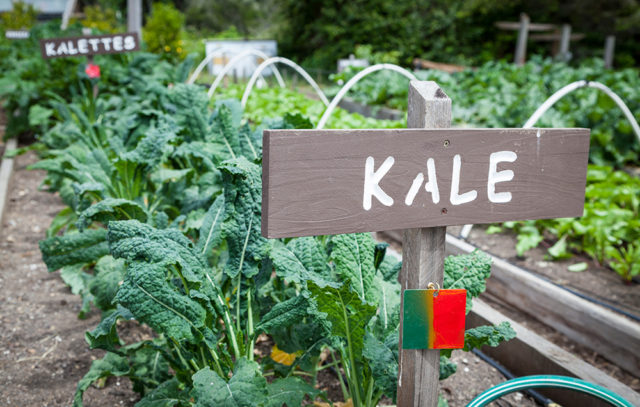Every new gardener has done it – gotten too excited and picked too early, or in a fear that they were pulling the plug just too soon, waited too long to harvest their vegetables. Even those with experience have jumped the gun too quick when they see the first tomato turning red on the vine.
So, anytime is a perfect time to go over the harvesting basics for a variety of popular vegetables:
1. Tomatoes

Yes, I know it’s tempting to pick these bad boys as soon as they turn red, for the best quality and flavor, try leave them on the plant for 5-8 days after they have gained full color. Then, at the end of the season, you’ll want to pick all the fruit before the first frost, regardless of ripeness. You can enjoy the classic “fried green tomatoes” or let them ripen indoors.
2. Zucchini

Zucchini will get huge if you let it – but don’t let it. These are best to pick when they are smaller and more tender. The ideal size is around 1 ½ inches in diameter and between 4-8 inches long.
If you’re hoping for a few larger zucchinis at the end of the season, don’t worry – there always seems to be a few hiding that you don’t find until they have become rather robust.
3. Lettuce

Young leaf lettuce can be harvested pretty much as soon as it has reached the size you’d like to have it. If you are waiting for more mature and larger leaves, then harvest when they are between 4-6 inches long. For head lettuce, pick when the heads become somewhat firm but before they have formed seed stalks.
4. Carrots

Carrots can be a little tricky for some gardeners, since you cannot see what is happening with them under the soil. Examine the tops and harvest when the diameter is between ¼ to 1 inch. In order to get the best and sweetest flavor, try waiting until there has been a light frost. Be careful as you harvest, because bruising on this root vegetable can cause it to develop soft rot when it is in storage.
5. Beets

The tops of beetroots will begin to emerge as they become ready for harvest. Pick when they are between 1 ¼ to 2 inches in diameter.
6. Brussels sprouts

Brussels sprouts should be harvested when the small heads reach between 1 – 1 ½ inches in diameter. They are easily picked by holding and twisting. In order to speed up the maturation of this vegetable, remove the lower leaves along the stem.
7. Broccoli

For broccoli, you want to time it so that you harvest it when it has a nice big flower head but before any of the flowers have started to open. Cut the plant approximately seven inches below the head. Once the main head has been harvested, side heads will develop.
Storing Fresh Vegetables and Fruits for Months – Without Refrigeration
8. Cauliflower

When the curds have reached 2-3 inches in diameter, cover them by loosely tying the head into surrounding leaves. Cauliflower heads should be picked when they have reached full size but are still smooth and white.
9. Peppers

Peppers can be harvested green or ripe, depending on the flavor that you want. If harvesting green, wait until the fruits are full sized and are firm to the touch.
For ripe (red, yellow, orange or purple) peppers, simply wait until they have reached their full color (generally about 2-3 weeks after reaching full size).
10. Sweet corn

You know that summer is in its apex when sweet corn starts to appear in farmers’ markets and at summer barbeque parties. If you are growing corn yourself, the time to pick it is when the silks have turned brown and dry and the kernels are completely filled. You can determine this by pressing on the husk with your thumbnail.
11. Watermelon

Watermelons should be harvested when they have reached full size – but given the variety of sizes that these tasty summer fruits can come in, how do you know it’s time? Gently turn the fruit and examine the spot where it contacts the ground. If this spot is a cream or yellow color, it means that your watermelon is ready to be harvested.
12. Winter squash

Unlike the summer varieties of squash such as zucchini, the rind of a winter squash should be firm and not easily penetrated by your fingernail. The point where the squash makes contact with the ground should be cream to orange colored depending on the variety that you are growing. If you are picking squash to be put in storage, leave about 2-3 inches of the vine at the top – this will help prevent rot. While these garden vegetables are hardy and can withstand a light frost, they should be picked before there is a heavy one.
13. Kale

When to pick kale will depend on when it is planted. In areas with mild winters, kale may be grown the entire season. In areas with freezing winter temperatures, start kale in late summer or late winter for a cool season frost before harvesting kale.







